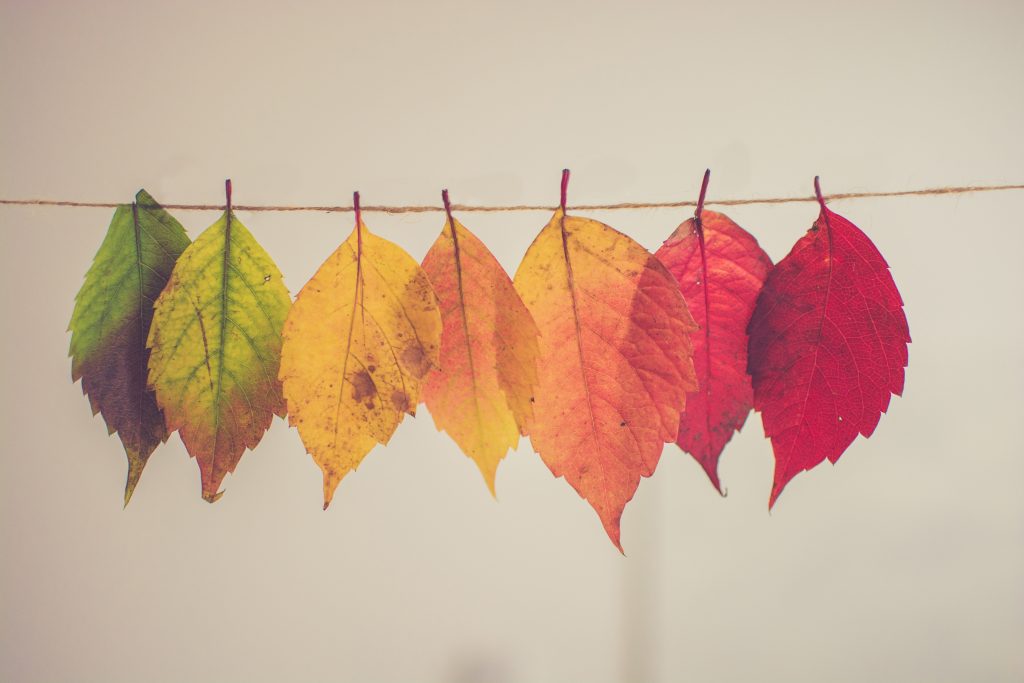
If you suffer from Seasonal Affective Disorder, then that first cool hint of air, untinged by the humidity of summer, doesn’t make you feel all excited and happy for the beginning of Fall. Instead, it can make you dread the eventuality of shorter days, more darkness than light, more desire to hibernate and eat carbs than to communicate and live.
There Is Something You Can Do!
Whereas others become inspired by the changing colors of the Fall foliage, the flavors and spices of seasonal recipes, the anticipation of the holiday season just around the corner, some begin to fear the relapse of depression that comes with the time change or with the experience of waking in the dark.
If you have experienced Seasonal Affective Disorder, or if your symptoms related to Major Depression or Bipolar Disorder always seem to worsen in the Fall or early winter, there is absolutely something you can do that can make a difference in your experience. I recommend that you do several things to head off a relapse or soften one that is in the beginning stages.
1. Get Moving! Preferably Out There!
Begin a gentle exercise program if you are not already doing daily exercise. Even better is to join a gym or a class that meets at a regular time, so you will also have social interaction and a place to go, to get you out of the house regularly. Getting a daily dose of a free anti-depressant is going to help.
2. Get A Med Check 3 Weeks Post Time-Change
Make an appointment NOW with your psychiatrist, or whoever prescribes your psychotropic medications, if you take any. It can take up to a month to 6 weeks to get on a psychiatrist’s schedule if you haven’t seen one in over 3 months. Ideally, you want to be seen about 3 weeks after we “fall back” with the time change. That is when I see depressive and motivational symptoms begin in my clients, and you don’t want to be trying to get a med check appointment near Thanksgiving and trying to adjust to new dosages right during the holidays. Am I right?!
3. Let There Be Light!
The light banks for use with SAD can be effective, so if you haven’t tried one, this could be the year you do. Even if you don’t use phototherapy, I highly recommend making sure you have lights with full-spectrum light bulbs on in your home or apartment during the dark winter months…at least 3 lights in a room on from 5 PM until about 8:30 or 9:00 PM, then reduce it to just one light for sleep hygiene.
4. Get Timers!
I also recommend you go to your local hardware store and invest in some inexpensive timers to plug your lamps into. Set at least one or two to go on so that you always arrive home from work or being out to a lit house…at least the front room that welcomes you should be lit. Use another timer to turn the lamp on beside your bed 30 minutes to 1 hour before your alarm clock is set to go off, so that you do not wake up in a dark room. These small adjustments may make a huge difference in your mood…light communicates with our brains in ways that affect mood, energy, sleep, and appetite.
5. Eat More Protein and Veggies
The sluggishness that comes with SAD and depression almost craves carbs and sugar instead of foods that can give you better nutrition, fiber, and better blood sugar control. Make sure every day that you eat lean protein and veggies of all different colors…whether you want them or not. A piece of dark chocolate a day is fine!
6. Take Good Care of Yourself

Fall can be a wonderful time, actually, to slow down and come inside, sit down by a warm fire for a while, sip some fresh apple cider, and reflect on the end of this year and the new one just around the corner. Remember that this is the best time to take good care of yourself, figure out what you need and get it for yourself, rest, feed yourself well, and let the season’s changes reveal something interesting to you.
Dr. Anita Sanz, PhD, Psychologist
- Life Planning (5)
- Therapy (43)
- Anxiety (11)
- Depression (16)
- On The Couch (16)
- Well Being (59)
- Health (10)
- Holidays (7)
- Life Hacks (20)
- Relationships (13)
- The Big Picture (9)
